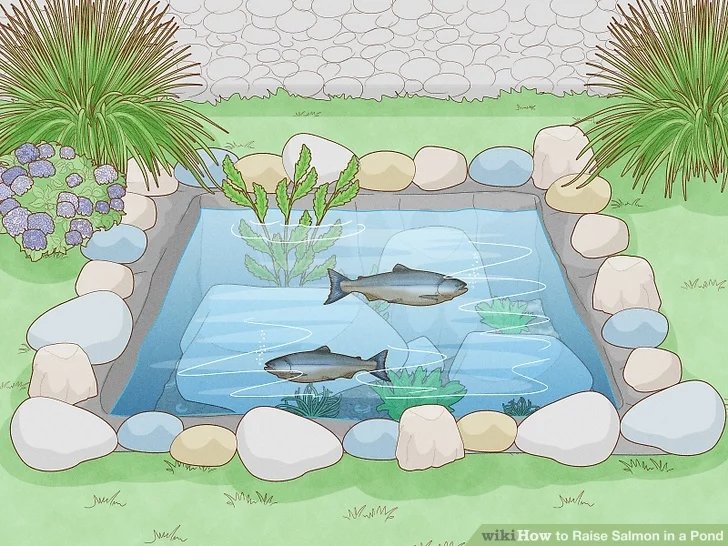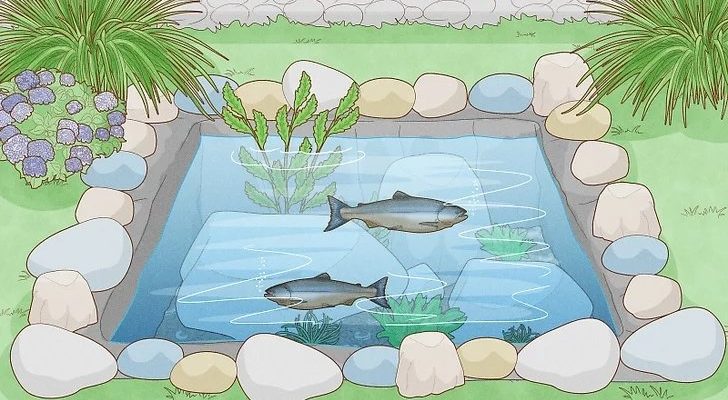
But here’s the thing: raising salmon isn’t just about tossing some fish in a pond and waiting. It requires careful planning, knowledge of salmon needs, and an understanding of the habitat you’re creating. Let me guide you through the ins and outs of making your own backyard salmon haven.
Understanding Salmon Species
Before you dive in, it’s crucial to know which species of salmon you want to raise. The most common types include Chinook, Coho, and Atlantic salmon. Each species has its own unique requirements and characteristics.
– Chinook Salmon: This is the largest species and can grow over 100 pounds! They thrive in cooler waters and are known for their rich flavor.
– Coho Salmon: Also known as silver salmon, they mature quickly and are popular among backyard fish farmers. They’re a great choice if you’re looking for something manageable.
– Atlantic Salmon: While not native to all regions, these salmon can be raised in ponds and are well known for being farm-raised for food supply.
Here’s a tip: Think about your local climate and what species will thrive. Not all salmon do well in warmer waters, so it’s essential to match your choice with your environmental conditions.
Setting Up Your Backyard Pond
Creating the perfect environment for your salmon starts with the pond itself. You need to ensure it has enough space, proper depth, and suitable water conditions. Here’s what to consider:
– Size Matters: Ideally, you’ll want a pond that’s at least 1,000 square feet. This gives your fish ample room to swim and grow. Bigger is usually better, especially if you plan on raising a larger number of fish.
– Depth: Salmon prefer deeper waters, around 5 to 8 feet, which helps keep the temperature stable and provides oxygen-rich areas.
– Filtration and Aeration: Clean water is non-negotiable. Invest in a good filtration system and consider a fountain or aerator to keep water oxygenated. Salmon are sensitive to poor water quality, and maintaining it is key to their health.
You might be wondering about the best way to dig this pond. It’s a good idea to consult with a local landscaper or do your research on how to set it up to ensure it meets the needs of the salmon and fits your yard.
Water Quality and Temperature
Now that you have the pond set up, let’s talk about water quality. Salmon thrive in clean, cold water. Ideally, their water temperature should be between 50°F and 60°F.
To monitor and maintain this, consider the following:
– Testing Kits: Use water testing kits to regularly check the pH, ammonia, nitrite, and nitrate levels. Salmon prefer a pH between 6.5 and 8.
– Cooling Options: In warmer climates, you might need to add shade or use a water chiller to keep things cool.
– Regular Maintenance: Make it a routine to change a portion of the water weekly to keep it fresh and remove any harmful toxins.
You may find that keeping the water quality just right can be a bit of a science project. But trust me, it’s well worth the effort when your fish start thriving!
Feeding Your Salmon
Feeding salmon might sound simple, but it requires some attention to detail. Salmon are carnivorous, meaning their diet is rich in protein. Here are some options you might consider:
– Commercial Pellets: Look for high-quality fish pellets designed for salmon. They’re balanced with the right nutrients.
– Live Food: If you want to get fancy, consider supplementing their diet with live food like worms or small crustaceans. This can help mimic their natural diet and stimulate growth.
– Frequency: Feed adult salmon 1-2 times a day, and be cautious not to overfeed. This can pollute the water and harm the fish.
One thing to keep in mind is that feeding habits can vary based on life stages. Juvenile salmon may need different diets than adults, so be aware of what your fish need at each stage of their life.
Health and Safety Considerations
Keeping your salmon healthy is probably at the top of your priority list. Salmon can be susceptible to a range of diseases and parasites, so regular monitoring is essential. Here are some best practices:
– Regular Inspections: Check your fish daily for any signs of illness, such as unusual swimming patterns or lesions. Early detection is key!
– Water Treatment: Consider using organic treatments to prevent diseases. This is safer for both your fish and the environment.
– Quarantine New Fish: If you plan to introduce new salmon, quarantine them for at least two weeks to ensure they’re disease-free.
Honestly, it’s much better to prevent issues than to deal with the aftermath. Taking time for these health checks will not only save your fish but also make the whole experience more enjoyable.
Harvesting Your Salmon
After months of dedication, you’ll eventually reach the moment of harvest, and it can be incredibly rewarding. Timing is crucial, as harvesting too early or too late can affect taste and quality.
– When to Harvest: Salmon are usually ready for harvest between 18 months to 2 years, depending on the species and environmental conditions.
– Methods: You can use a net to catch your salmon during harvest. It’s best to do this in cooler early mornings or late evenings when the fish are less active.
– Processing: If you’re planning to eat your salmon, be prepared for processing. Learn how to fillet and store your catch properly to enjoy the freshest seafood.
Consider this a celebration of your hard work! Sharing your first catch with friends or family can be a fantastic way to mark your success.
Raising salmon in your backyard pond is more than just a hobby; it’s a fulfilling way to connect with nature and learn about sustainable practices. With some planning, the right equipment, and a healthy dose of patience, you can create a thriving aquatic environment that brings joy and delicious food right to your table.
Remember, every step—from selecting the right species to maintaining water quality—plays a part in your success. So, roll up your sleeves, get those hands wet, and enjoy the journey of raising salmon. You may find that it’s not just about the fish but also about the serenity and satisfaction that come with nurturing life. Happy fish farming!

